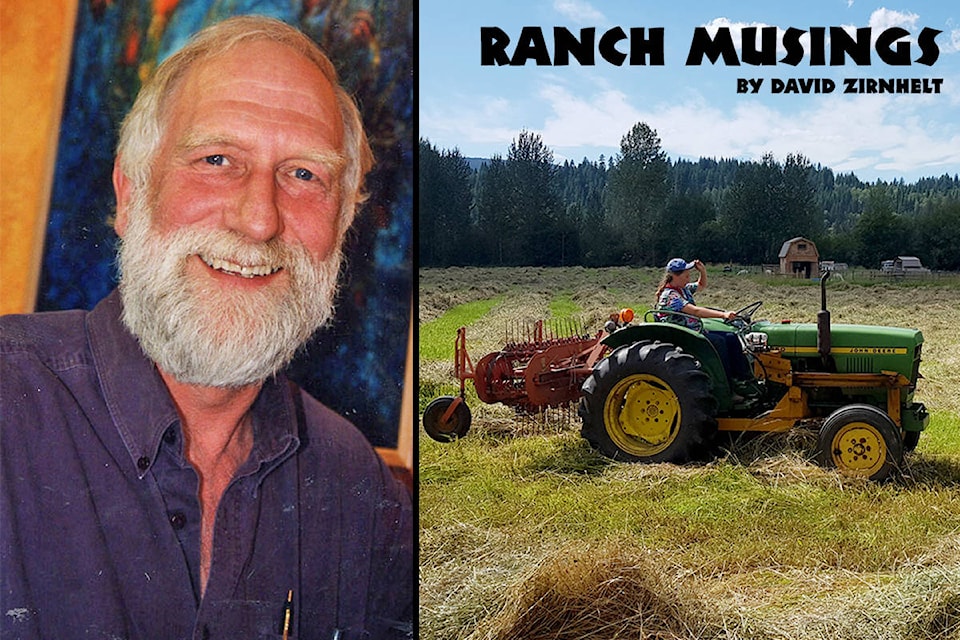We can look at the gloomy side of this season between winter and spring, or we can say that mud and water running everywhere is a prelude to full out spring blooming.
Where we are, the beauty of the gradually warming place we live, gives us a perspective we relish. We love looking at the landscape through the trees and wonder at the sculpting nature has performed on the hills and this old (thousands of years post-Ice Age) river bottom.
The few Kokanee fish that remain in the Beaver Valley system were isolated when the big river, the Horsefly, turned towards Quesnel Lake at the present bridge at Horsefly, instead of continuing down to the Beaver Valley.
A high waterfall, up from the Quesnel River at Beavermouth, stranded spawning salmon inland unable to return to the sea. We are now left with landlocked salmon we call Kokanee.
We are living in a landcape of brush and trees. The undergrowth is so thick that once the leaves are on the bushes and the deciduous trees, one cannot see the rolling land surface. Many interesting places to walk seem to invite us to wander.
The early morning frosts which persist for this short season, create a crust on the snow which is left and firm up the soil at least until the early afternoon when the land thaws on the surface.
It was only in my late 60s that I could say that I have walked over much of the unseen land, able to see through most of the forest.
The changing seasons give us opportunities to see and feel our surroundings. In time, our observations of sounds, sights and smells develop a deep sense of belonging in this place called home.
I have mused before what it must feel like for Aboriginal peoples here and people in older Eastern and Western societies to be attached to place.
Many of us on ranches either inherited our places or developed them to what they are today. Speaking for myself, my dreams were about returning to home after being away for a decade of my youth.
Those dreams were of a peaceful place that provided most of what we need to thrive. A friend who emigrated to B.C. from the Eastern States once said that there was more “culture” standing on a hillside in northeastern B.C., than in the City of New York. He had played a trombone in an orchestra.
We often rely on artists and writers to help us see what is around us. Or we can walk out our doors and dwell with our senses fully tuned to what is around us. Sometimes it is as simple as a different light shining on our place or colours in the sky that give us a different view on life itself. In bush country, the smallest flowers on shrubs may be the brightest show available. I give the examples of tiny yellow blossoms on Gooseberry and Beaked Hazelnut. It is not just the viewscape we enjoy from our places, but the near view when we look closely.
READ MORE: Trends and opportunities for agriculture land owners
David Zirnhelt is a member of the Cariboo Cattlemen’s Association, longtime rancher and chair of the advisory commitee of the Applied Sustainable Ranching Program at Thompson Rivers University Williams Lake.
Like us on Facebook and follow us on Twitter.
